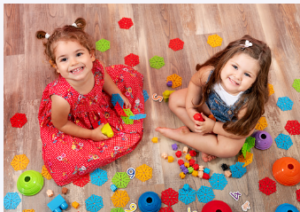Choosing the safest childcare centre is an important decision for parents. Many states have taken various approaches to address the environmental contamination issue at childcare facilities. In Connecticut, EOHA developed the SAFER Program using a questionnaire and a referral form that enables childcare licensing inspectors to identify property and building attributes indicative of environmental contamination.
 Safety Inspections
Safety Inspections
The safety of children is a top priority for most parents. They want to enrol them in the safest childcare centre that provides high levels of security and safety. Some of the best ways to keep kids safe include ensuring that anyone who can interact with them has had a background check. It includes employees and volunteers. Having an emergency plan is also crucial for childcare centres. It could help protect them from threats like a power outage or data breach.
Ultimately, the most important factor in a safe childcare centre is the quality of supervision. A high staff-to-child ratio ensures that each child is always being watched. Additionally, properly storing food and equipment is critical to keep kids safe.
Falling Objects Prevention
Often, children are injured by heavy objects that fall on them at home or childcare centres. These accidents can be prevented by ensuring that books and other objects are secured on shelves and placed out of reach. It’s also essential that all furniture is secured to the walls.
The safest childcare centre should be able to provide details of their safety inspection reports. They should also have a system for daily checks of indoor and outdoor areas. They should be able to identify any potential hazards and act on them.
Children can be rambunctious and energetic, so that accidental injuries will happen occasionally. But by taking several preventative measures and closely supervising all children, you can greatly lessen the number and severity of injuries that occur.
All childcare centres must have a plan for dealing with accidents and emergencies. They should be able to respond quickly to any incident and ensure that all emergency contact information is updated.
Fire Safety
Child safety is always a priority at any childcare centre. But during the coronavirus pandemic, thermometer checks, handwashing, and face masks are just a few preventive measures at daycares nationwide. Parents are hesitant to send their kids away to someone else’s home, so when they do, they want to ensure their children are in a safe environment.
Whether you own a large commercial facility or operate a small family child care home, it is your responsibility to maintain the safest childcare centre with at least minimum fire safety standards for your location. It includes installing smoke detectors and keeping them tested regularly. It also requires a well-developed evacuation plan and fire drills to be conducted monthly.
In the event of a fire, it is important to teach children how to safely escape from the building using the stop, drop, and roll method. Keeping fire extinguishers on site and testing them regularly is also a good idea.
Social Distancing
As communities tiptoe back toward normal routines, working parents face a daunting challenge: finding safe childcare for their children. Temperature checks and handwashing are constants, class sizes have limits, and common areas like lunchrooms are off-limits. While these safety measures are necessary, they create a clinical atmosphere that can make children feel isolated and alienated from where they normally thrive.
During the pandemic, childcare centres have had to make major changes to pick-up and drop-off times, minimise contact between parents and children and enforce social distancing. Many centres also eliminate activities that bring together large groups of kids and adults, such as in-person field trips and group meals. Virtual events, however, can be an effective way to continue these activities without increasing the risk of COVID-19 transmission.
Regarding social distancing, some kids will adjust more quickly than others. Younger children, in particular, can have trouble with the lack of physical touch and direct interaction, especially if it feels like an empty gesture. It may be helpful to offer alternative ways for kids to connect, such as by offering verbal comfort or a gentle hand on the shoulder.
